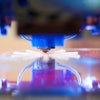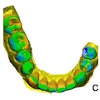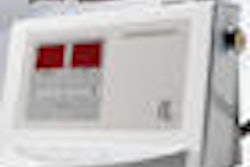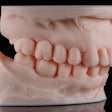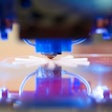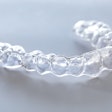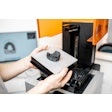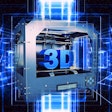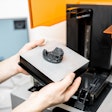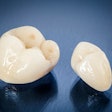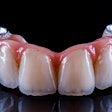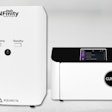
Contrary to the conclusions of a recent study in Caries Research, a study in the current Compendium of Continuing Education in Dentistry suggests that some light-based diagnostic tools can enhance the early detection of carious lesions (September 2012, Vol. 33:8, pp. 582-593).
"Fluorescence tools that provide high-resolution fluorescence pictures are likely to provide more reliable scores than fluorescence devices that assess via a single spot," wrote the study authors, from the University of California, San Francisco School of Dentistry. "The better visibility of the high-resolution fluorescence imaging could prevent unnecessary operative interventions."
They compared several light-based diagnostic modalities -- including fiber-optic transillumination, optical coherence tomography, and fluorescence diagnostic tools -- with the "gold standard" for caries detection: the International Caries Detection and Assessment System (ICDAS II).
"In order to easily apply the CAMBRA principles ... it is useful to introduce state-of-the-art sensitive caries diagnostic tools into the dental office armamentarium," the study authors wrote. "If caries lesions are detected early enough in a precavitated stage, intervention methods such as fluoride application, sealants, preventive resin restorations, laser treatment, and antibacterial therapy can be applied to reverse the caries process."
For this study, the researchers recruited 100 patients (58 females, 42 males; average age 23.4 ± 10.6 years) presenting with 433 occlusal, unfilled surfaces of posterior teeth (90 bicuspids, 343 molars). Two examiners independently evaluated the patients' ICDAS II scores. They scored 110 fissure areas as sound (ICDAS II code 0), 450 as ICDAS II code 1 (mineral loss in the base of a fissure), and 314 as ICDAS II code 2 (mineral loss extended from the base).
Another 107 cases were scored as ICDAS II code 3 (early cavitation with first visual enamel breakdown), while 26 cases were assigned ICDAS II code 4 and/or code 5 (more progressed carious lesions).
Fluorescence methods compared
Using the Diagnodent (KaVo Dental), the Spectra optical caries detector (Air Techniques), the SoproLife (Acteon), and a quantitative light fluorescence (QLF) research tool, the examiners then evaluated up to five fissure areas on each tooth, for a total of 1,066 areas of interest for each system.
The Diagnodent uses red laser light (655 nm) to illuminate regions of a tooth; the emitted light is channeled through the handpiece to a detector, and the device then displays a digital number (1-99) and emits a beeping sound. A higher number indicates more fluorescence and thus a more extensive lesion beneath the surface; a value of 5-10 indicates initial caries in enamel, 10-20 indicates initial caries in dentin, and greater than 20 indicates caries in dentin.
In this study, the researchers recorded Diagnodent values between 0 and 10 for 424 of the evaluated pit-and-fissure areas, followed by 291 spots with values between 11 and 20. The remaining 326 measurements showed values between 21 and 99, including 31 areas with a Diagnodent value of 99.
The Spectra device utilizes fluorescence from light-emitting diodes in the 405-nm wavelength. When the light is projected onto the tooth surface, cariogenic bacteria fluoresce red, while healthy enamel fluoresces green. An on-screen picture of the tooth includes false coloring and a number scale intended to predict the caries depth: 1.0-1.5 means early enamel caries, 1.5-2.0 is deep enamel caries, 2.0-2.5 is dentin caries, and 2.5 or above signifies deep dentin caries.
For this study, a Spectra value of 0 was observed 114 times, while values between 1.0 and 1.9 were displayed 739 times, a value of 2.0 to 2.9 occurred 172 times, and a value of 3.0 to 3.9 was seen in 14 instances (3.9 was the highest value measured).
Combination approach
The SoproLife system combines the advantages of a visual inspection method with a high-magnification oral camera and laser fluorescence device. In "daylight mode," white LEDS illuminate the tooth, while in "fluorescence mode" the excitation results from four blue LEDs at 450 nm.
In order to classify caries lesions in early stages using the Soprolife, the study authors developed a new scale, where daylight and fluorescence pictures for occlusal fissure areas were each categorized into six different groups, code 0 to code 5.
In daylight mode, code 0 is given for sound enamel with no changes in the fissure area. Code 1 is applied if the center of the fissure shows whitish or slightly yellowish change in the enamel. In code 2, the whitish change is wider and extends to the base of the pit-and-fissure system and comes up the slopes of the fissure system in the direction of the cusps. In code 3, fissure areas are rough and slightly open, indicating the beginning of enamel breakdown. In code 4, the caries process is no longer confined to the fissure width, and in code 5 there is obvious enamel breakdown with visible dentin.
The scoring is slightly different in SoproLife's blue fluorescence mode. Fluorescence mode code 0 is given when the fissure appears shiny green and the enamel appears sound with no visible changes. Code 1 is selected if a tiny, thin red shimmer in the pit-and-fissure system is observed, which can slightly come up the slopes of the fissure system. In code 2, darker red spots confined to the fissure are visible. For code 3, dark red spots extend as lines into the fissure areas, but are still confined to the fissures. If the dark red (or red-orange) extends wider than the confines of the fissures, a code 4 is assigned. Code 5 is selected if obvious openings of enamel are seen with visible dentin.
For this study, and using this new scoring system, in daylight mode the examiners scored 142 pit-and-fissure areas as code 0, 436 as code 1, 165 as code 2, 138 as code 3, 96 as code 4, and 89 as code 5. In fluorescence mode, they scored 242 areas as code 0, 263 as code 1, 224 as code 2, 133 as code 3, 121 as code 4, and 81 as code 5.
Finally, QLF uses a 370-nm light source to generate green autofluorescence of the tooth. With QLF, the demineralized area appears opaque and darker than sound enamel. In the current study, mineral loss values were evaluated on 988 sites, with 353 sites showing a mineral loss of less than 10%, 463 sites between 10% and 20%, 131 sites between 20% and 30%, and 42 sites between 30% and 67%.
Regression curve analysis
Examining the relationship between the ICDAS II scores and the scores obtained using the different diagnostic tools revealed that for each ICDAS II code, each device provided a distinct average score.
"To evaluate the ability to discriminate between two different scores for each assessment method, linear regression curves were calculated for each tool," the study authors wrote. "The steeper the regression curve, the higher the ability of a tool to discriminate between two values and the more useful the tool is in clinics."
Normalized data linear regression showed that the SoproLife assessment tools yielded the best caries score discrimination, followed by the Diagnodent and the Spectra, they noted. In other words, "when using SoproLife, a judgment call for classification of a lesion into sound, precavitated or cavitated ... is easier to make than with the other tools," they wrote.
The new SoproLife daylight and blue fluorescence codes can serve as "a distinct classification" for caries lesions, enabling practitioners to predict the histological depth of caries lesions, they added.
"When comparing spot-measuring fluorescence tools with those providing high-resolution fluorescence pictures, the better visibility provided by the high-resolution tools might help prevent unnecessary operative interventions that are based solely on high fluorescence scores," the researchers concluded. "The observation capacity of such a system can guide clinicians toward a more preventive and minimally invasive treatment strategy in the course of monitoring lesion progression or remineralization over time."
The authors declared that there was no conflict of interest regarding this study, which did receive grant support from Acteon.


